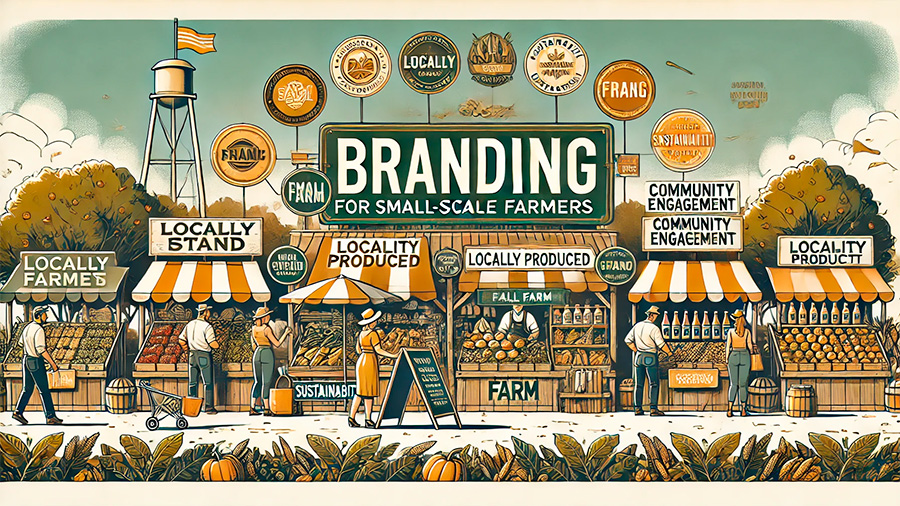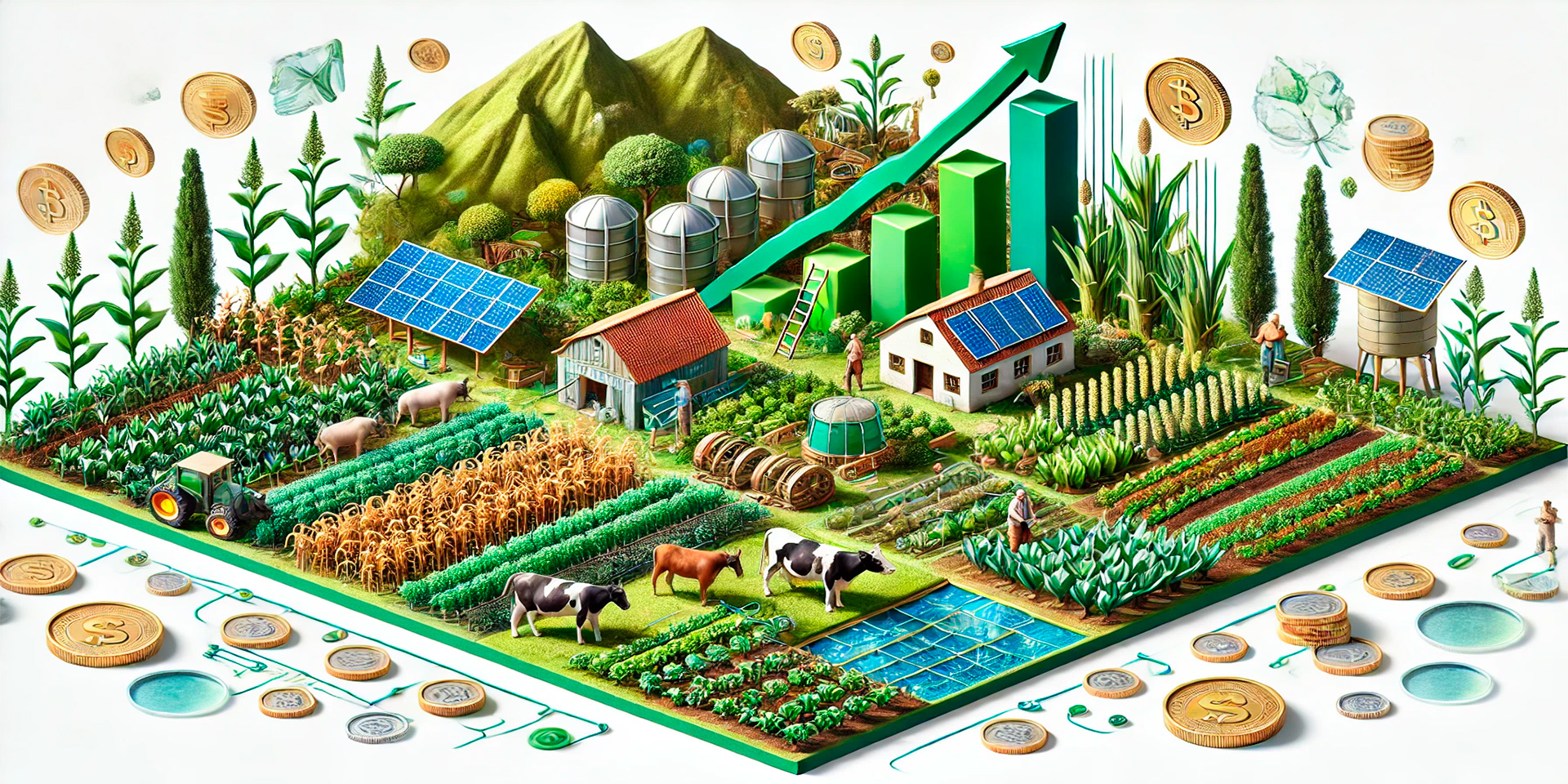Small-scale farming offers unique opportunities for profitability, but it also comes with challenges that require careful management and strategic planning. While large farms benefit from economies of scale, smaller farms can leverage their size to focus on niche markets, personalized service, and sustainable practices. By optimizing efficiency, diversifying income streams, and employing innovative techniques, small-scale farmers can increase profitability while maintaining manageable operations.
In this guide, we’ll explore actionable tips for maximizing profits on a small farm, covering everything from cost management and crop selection to marketing strategies and sustainability practices. With the right approach, small-scale farming can become not only sustainable but also highly profitable.
1. Focus on High-Value Crops and Niche Markets
One of the most effective ways to maximize profits in small-scale farming is to grow high-value crops that cater to niche markets. Instead of competing with larger farms on commodity crops, small farmers can capitalize on the growing demand for specialty products, such as organic produce, heirloom vegetables, herbs, and specialty grains. These crops often command higher prices, especially in local and direct-to-consumer markets.
Choosing crops that are well-suited to your local climate and soil conditions will also improve yields and reduce input costs, further boosting profitability. Understanding market demand and targeting gaps in local supply can set your farm apart and create a loyal customer base willing to pay premium prices for your products.
Selecting High-Value Crops
To maximize profits, focus on crops that offer the highest return on investment per square foot. Some examples of high-value crops for small-scale farms include:
- Microgreens
- Gourmet mushrooms
- Herbs (basil, thyme, oregano)
- Berries (strawberries, blueberries, raspberries)
- Heirloom tomatoes
- Specialty lettuce and greens
These crops are in high demand, especially in urban areas or among health-conscious consumers, and they typically have shorter growth cycles, allowing for multiple harvests each year.
Tapping into Niche Markets
Identify niche markets that are underserved by larger farms or grocery chains. This could include organic, non-GMO, or pesticide-free produce, as well as unique heirloom varieties that are difficult to find in traditional supermarkets. Additionally, consider marketing directly to restaurants, farmers’ markets, or CSA (Community Supported Agriculture) programs, where you can build relationships with customers and sell at a premium.
2. Diversify Income Streams
Relying on a single income source can be risky, especially for small-scale farmers. Diversifying your income streams helps mitigate risk and ensures that you have multiple revenue sources throughout the year. By offering a mix of products and services, you can create a more resilient and profitable farm.
In addition to growing crops, consider raising livestock, producing value-added goods, or offering agritourism experiences. Each of these options provides an additional layer of income while utilizing existing resources on your farm.
Adding Livestock to Your Farm
Livestock such as chickens, goats, or bees can complement crop production and generate additional income. For example, chickens provide eggs and meat while also contributing to soil health through manure. Bees can produce honey and help with pollination, increasing crop yields. Small-scale livestock operations are relatively easy to manage and can significantly boost profits.
Creating Value-Added Products
Value-added products are another way to increase revenue. By processing your crops into finished goods—such as jams, sauces, herbal teas, or pickles—you can sell them at a higher price point than raw produce. Value-added products often have a longer shelf life and can be sold year-round, even during the off-season.
Additionally, producing goods such as soaps, candles, or baked goods using ingredients from your farm can appeal to local markets, particularly at farmers’ markets, fairs, and online.
Agritourism and Farm-Based Experiences
Agritourism is a growing trend that allows small-scale farmers to diversify their income by offering farm-based experiences to the public. Whether it’s hosting farm tours, farm-to-table dinners, workshops, or pick-your-own produce events, agritourism can generate substantial revenue while also promoting your farm.
By opening your farm to visitors, you not only create a new income stream but also build a loyal customer base and strengthen your local community presence. Agritourism also provides an opportunity to educate consumers about sustainable farming practices, further enhancing your farm’s brand.

3. Optimize Efficiency and Reduce Costs
Maximizing profits on a small farm isn’t just about increasing revenue—it’s also about managing costs effectively. By optimizing your operations and reducing unnecessary expenses, you can increase profitability without significantly expanding production. This involves streamlining labor, improving resource management, and minimizing waste.
Efficient Use of Labor
Labor is one of the highest costs for small-scale farms. To maximize efficiency, focus on automating repetitive tasks, such as irrigation, planting, or feeding livestock. Simple tools like drip irrigation systems, raised beds, and hoop houses can improve efficiency by reducing the time and labor required to water, plant, and harvest crops.
Additionally, hiring seasonal workers or utilizing volunteer labor through programs like WWOOF (Worldwide Opportunities on Organic Farms) can help manage labor costs during peak seasons. For family-run farms, dividing tasks based on individual strengths can also improve productivity without adding extra labor expenses.
Implementing Sustainable Practices
Sustainable farming practices can reduce input costs while improving soil health and crop yields. Techniques like crop rotation, cover cropping, and composting help maintain soil fertility and reduce the need for chemical fertilizers. Sustainable practices also reduce water usage and improve pest management, cutting costs associated with irrigation and pesticides.
By embracing permaculture principles, small-scale farmers can create self-sustaining ecosystems that require fewer inputs and yield more over time. This approach not only reduces costs but also aligns with consumer demand for environmentally friendly products.
Minimizing Waste
Waste reduction is key to maximizing profits. Start by closely monitoring inventory and production to avoid overproduction, which can lead to spoilage and waste. Establish partnerships with local food banks or restaurants to sell or donate excess produce, ensuring that nothing goes to waste.
Composting food waste or using crop residues as animal feed can further reduce waste and improve farm sustainability. Additionally, repurposing materials such as old wood, pallets, or discarded containers for farm infrastructure can cut costs without sacrificing functionality.
4. Leverage Direct-to-Consumer Sales
Selling directly to consumers is one of the most effective ways for small-scale farmers to increase profits. By cutting out intermediaries such as wholesalers or grocery stores, you can retain a larger share of the sales price. Direct-to-consumer sales also allow you to build stronger relationships with your customers, which can lead to repeat business and customer loyalty.
Farmers’ Markets and CSA Programs
Farmers’ markets and CSA programs are excellent avenues for selling directly to consumers. Farmers’ markets offer a platform to reach local customers who value fresh, local produce, while CSA programs provide a steady income stream by selling farm shares to members who receive a weekly or monthly box of fresh products.
Both options allow you to set your own prices, which is particularly beneficial for high-value, niche crops. Additionally, these platforms offer opportunities to engage with your customers, share your farm’s story, and build a loyal customer base.
Online Sales and Delivery Services
With the rise of e-commerce, small-scale farmers can now expand their reach by offering products online. Creating a farm website or selling through online marketplaces allows you to reach a wider audience beyond your local community. Offering home delivery or subscription boxes can further increase convenience for customers and generate recurring revenue.
Promoting your products through social media, email marketing, and community networks can drive traffic to your online store and increase sales. By leveraging digital tools, you can create an additional revenue stream and maximize profits on your small farm.

5. Build a Strong Farm Brand
Branding is critical for small-scale farmers who want to stand out in a crowded market. A strong farm brand helps build customer loyalty, attract new customers, and differentiate your products from larger competitors. By focusing on quality, sustainability, and community engagement, you can create a brand that resonates with consumers who are willing to pay a premium for locally produced, high-quality products.
Storytelling and Transparency
Consumers are increasingly interested in the story behind the products they purchase. Sharing your farm’s story, values, and farming practices can help build trust and establish a deeper connection with your customers. Transparency about how your products are grown, harvested, and processed adds authenticity to your brand, making it more appealing to health-conscious and eco-conscious consumers.
Community Engagement and Partnerships
Engaging with your local community is a powerful way to strengthen your farm’s brand. Partner with local businesses, schools, or non-profits to host events, workshops, or fundraisers on your farm. Collaborating with other local producers or restaurants can also help expand your reach and introduce your products to new audiences.
Building a strong farm brand takes time, but it’s a critical step in maximizing profits. By fostering a loyal customer base and creating a unique identity, your small-scale farm can thrive in a competitive market.
Conclusion: Small-Scale Farming for Maximum Profitability
Maximizing profits in small-scale farming requires a multifaceted approach that combines smart crop selection, diversified income streams, cost-effective practices, and direct-to-consumer sales. By focusing on high-value crops, leveraging innovative technology, and building a strong farm brand, small-scale farmers can boost their profitability while maintaining sustainable, efficient operations.
With the right strategies in place, small farms can thrive, offering high-quality, niche products that resonate with today’s consumers. By embracing innovation and maximizing efficiency, small-scale farmers can not only survive but also achieve long-term success and profitability in the agricultural sector.

